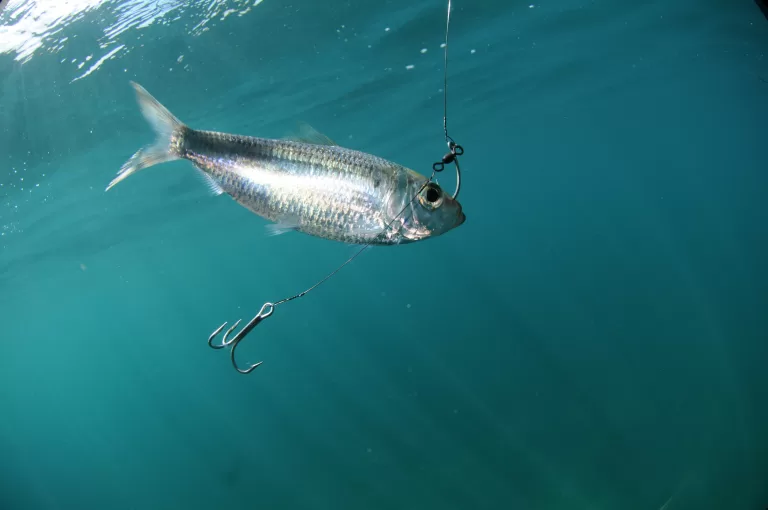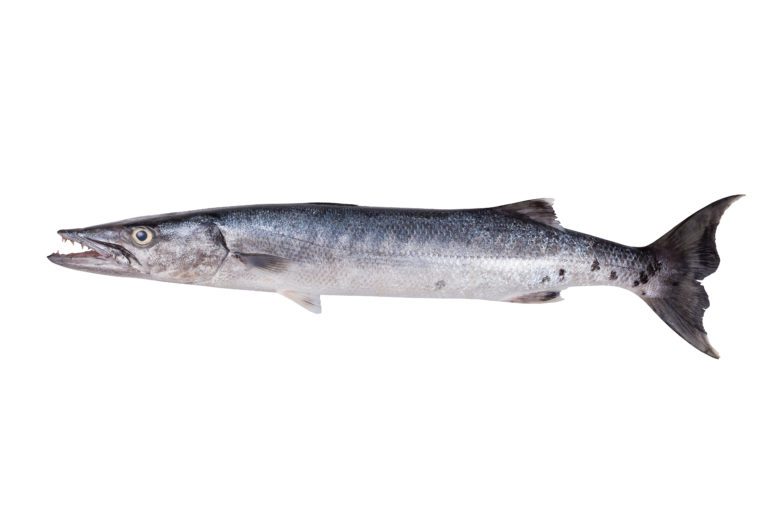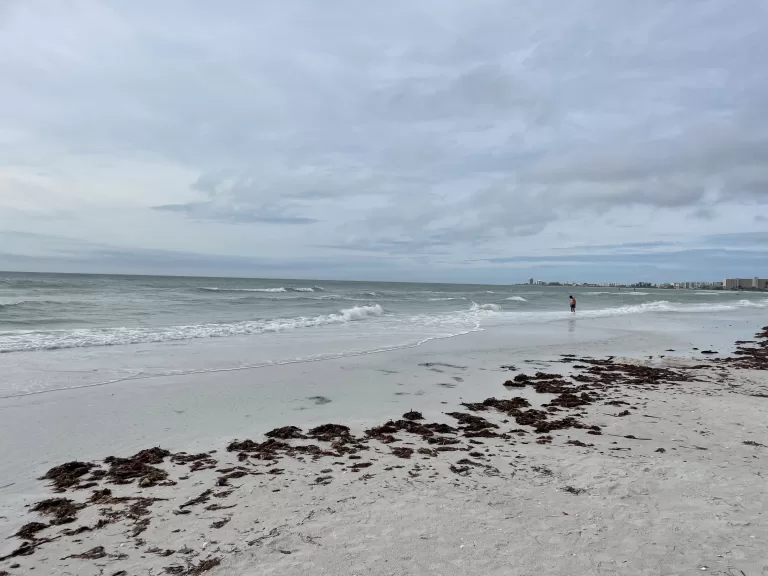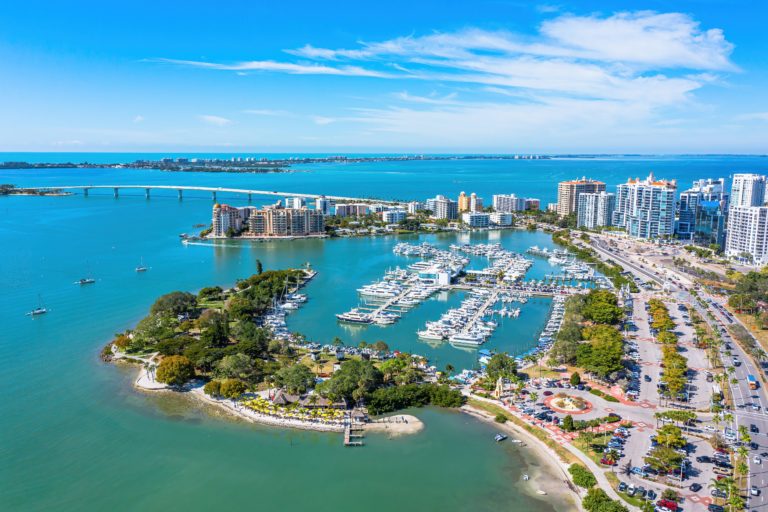Mastering the Waters: A Step-by-Step Guide on How to Catch Mahi Mahi in Florida
Seeking advice on how to catch Mahi Mahi in Florida? Skip the guesswork. This guide zeroes in on the essentials: prime spots, the right tackle, and proven methods. Clear, straightforward, and jargon-free, we’ll help prime you for your next outing with actionable tips to outsmart Florida’s famed blue-water battler.
Key Takeaways
- Mahi Mahi, also known as dolphinfish, are aggressive and prefer warm waters near floating objects, making offshore fishing in Florida a prime opportunity for anglers.
- Essential gear for success in Mahi fishing includes a sturdy rod with a heavy action, a 30 to 50-pound line, fluorocarbon leaders, and bait such as ballyhoo or squid.
- Prime Mahi Mahi habitats are often near floating debris or sargassum, in waters preferably around 82 degrees. Trolling and using live or artificial bait effectively can significantly up your Mahi Mahi catch rate.
Unlocking the Secrets of Mahi Mahi in Florida Waters
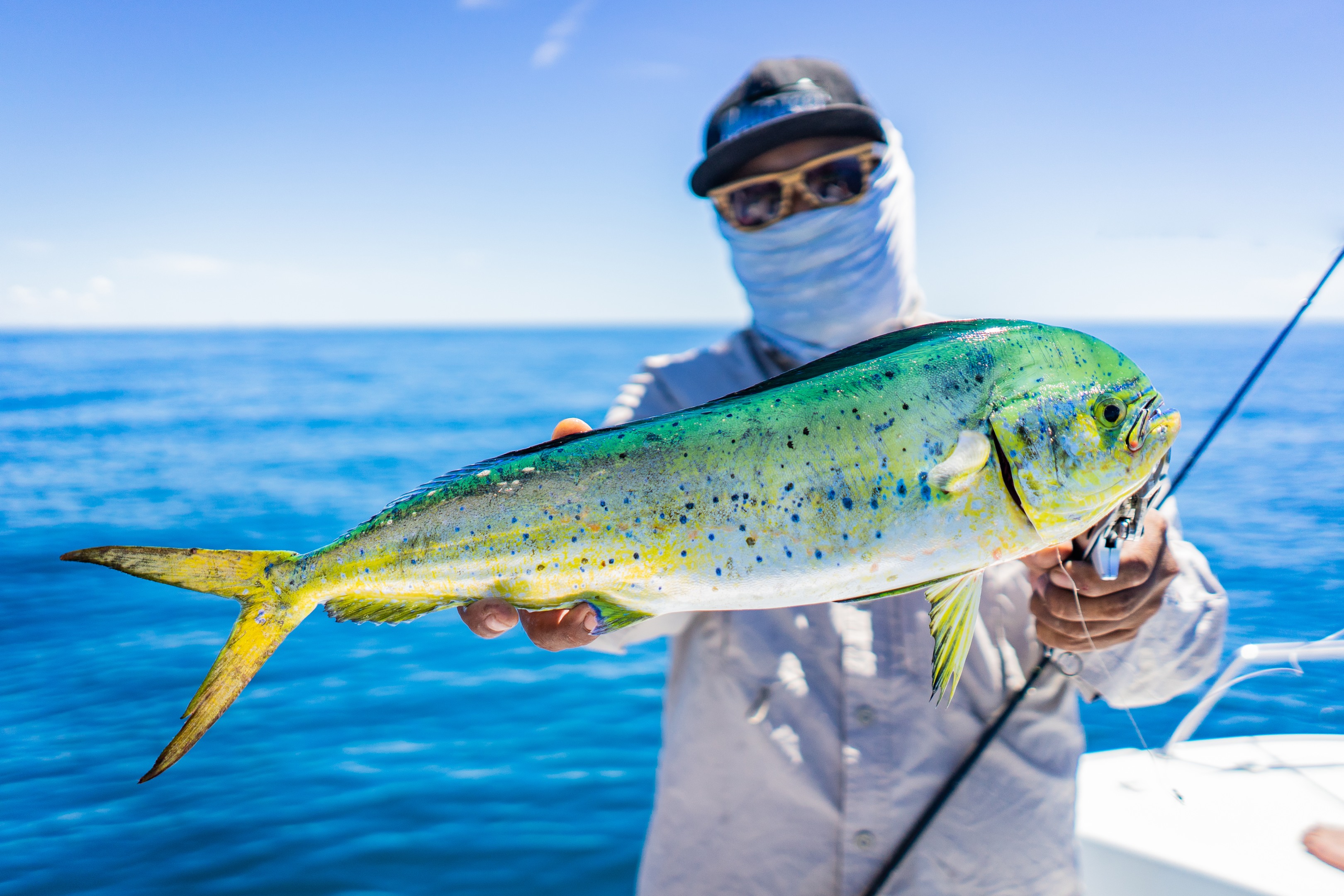
The vibrant Mahi Mahi, also known as the dolphin fish, characterized by its long body, blunt face, and a dorsal fin extending along its length, is a marvel in the azure waters of Florida. As aggressive fish, their preference for warm waters near floating objects like seaweed or debris make them an alluring catch for anglers.
These fish are not only unique for their radiant colors but also for their lifestyle. Mahi Mahi in Florida waters usually stick around for less than five years, with some lasting up to six. But don’t let their fleeting presence fool you. Their aggressive nature and the thrill of the chase make them a popular target for anglers.
Whether it’s the Florida Keys or the Atlantic coast, Mahi Mahi fishing is a spectacle to experience. These fish are known to be spotted near floating seaweed or debris, making offshore fishing an exciting prospect. So, whether you’re fishing for Mahi in the tropical waters of Costa Rica or the subtropical waters of South Florida, the thrill of catching a Mahi Mahi is one that’s hard to match.
Essential Gear for Mahi Fishing Success
Familiarity with Mahi Mahi is the first step; next comes the preparation for the catch. The appropriate equipment can be the difference between a triumphant day at sea or returning home with nothing. And when it comes to Mahi fishing, the top choices are:
- Okuma’s Makaira Fishing Rod
- Shakespeare USSP701MH Ugly Stik Spinning Rod
- Lew’s Tournament Performance Casting Rod
- Enigma
These rods are suitable for both recreational and commercial fishing gear.
Beyond a sturdy rod, the appropriate fishing line is a key factor in successful Mahi fishing. A 7’0″ heavy action rod with a 30 to 50 pound braided or fused line is ideal, especially when fishing offshore in Florida waters. Moreover, the best leaders for Mahi fishing, also known as catching dolphin, are usually 15 to 20 feet long. Opt for fluorocarbon leaders with a strength between 30 and 80 lb.
Lastly, you’ll need the right bait. Popular choices among most anglers include:
- Ballyhoo
- Cut fish
- Small blunt-headed trolling lures
- Squid for live or dead bait
With the right gear, you’re all set to embark on your Mahi fishing adventure!
Identifying Prime Mahi Mahi Habitats

Understanding Mahi Mahi’s favored habitats can greatly enhance your odds of a fruitful catch. In Florida waters, including the Florida Keys, Mahi Mahi usually gravitate towards floating spots like the brown algae called Sargassum or grass lines and other natural and man-made floating debris.
Water temperature also plays an essential part in determining where Mahi Mahi hang out. These fish prefer waters around 82 degrees but can also be found in colder waters down to 68 degrees. They’re particularly drawn to places with temperature breaks, usually where there are strong currents. Such areas often abound with bait fish, making them prime spots for Mahi Mahi.
The Art of Trolling for Mahi
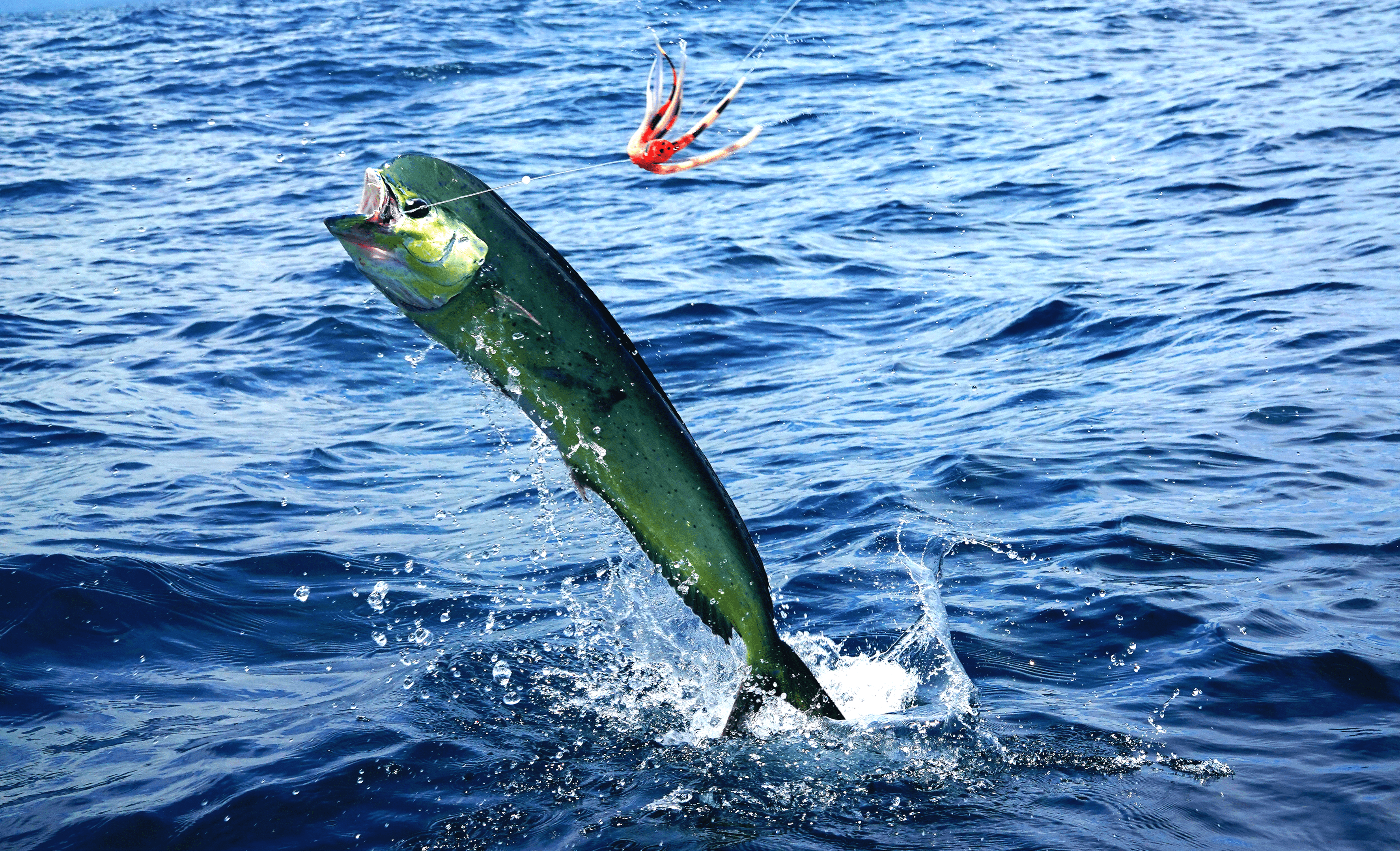
Trolling proves to be an effective strategy for targeting Mahi Mahi, and proficiency in this technique can greatly enhance your odds of reeling in a large catch. The perfect trolling speed for Mahi Mahi is between 2 and 9 knots. Using rigged ballyhoo as bait can increase your chances of catching them.
When it comes to bait choice for trolling, there are a few options to consider:
- Ballyhoo: This is the most popular choice and is known to be very effective in attracting Mahi Mahi.
- Squid: While not as commonly used as ballyhoo, squid can also be quite effective in attracting Mahi Mahi.
- Pilchards: In clear and calm sea conditions, using live bait like pilchards can be more appealing to Mahi Mahi than dead bait.
In addition to bait choice, it’s also important to switch up the speed and method of trolling to make it more effective.
Trolling for Mahi Mahi requires planning and tactics. Here are some tips to help you:
- Aim for the edges of weed lines or flotsam where Mahi Mahi usually hang out.
- Be ready to switch up your game plan if needed.
- Troll at speeds between 2 and 9 knots for a successful catch.
Live Bait Tactics for Mahi

Employing live bait can prove fruitful in catching Mahi Mahi. The most effective live baits are:
- small blue runners
- pilchards
- ballyhoo
- squid
The ideal bait size tends to be small, using leader sizes from 30 to 80 pound fluorocarbon and circle hooks from 5/0 to 8/0, or a chunk of ballyhoo on a 4/0 to 6/0 hook with a 50-pound-test leader. Commercial fishing gear floats can also be used to keep the bait near the surface.
Rigging live bait properly can significantly increase your chances of a successful catch. You can rig live bait by running the hook point through the ballyhoo’s gill slit and out its throat, with most of the hook shank pulled through. Another way is to use a small snap swivel on the end of the line for quick attachment and removal with pre-tied rigs.
To make your live bait look super appealing to Mahi, you can use live-bait chumming and lures that they love. Understanding the seasonal cycles can also help you pick the right bait presentation.
Targeting Mahi with Artificial Lures
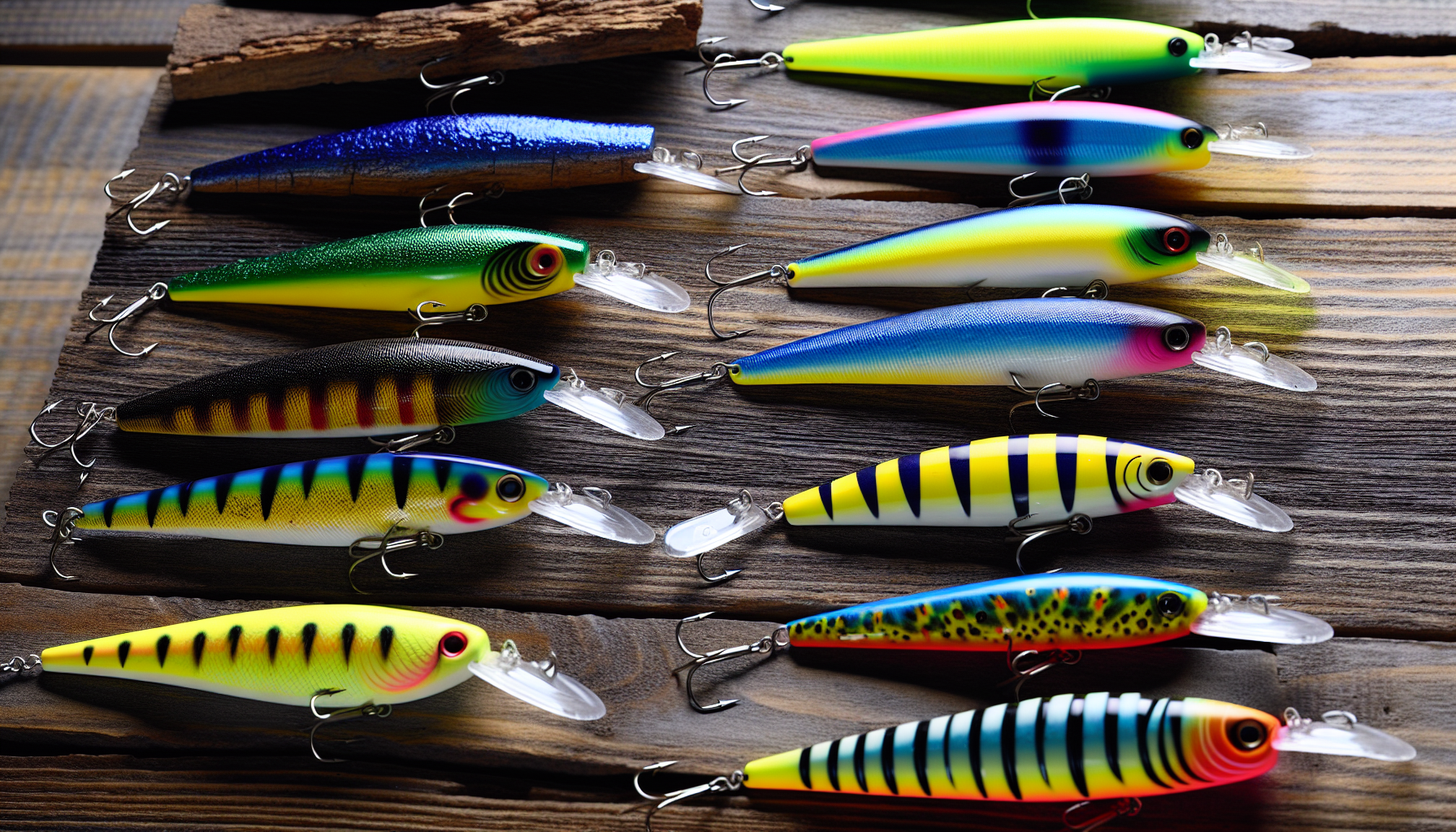
If live bait doesn’t appeal to you, fret not! Artificial lures can be equally successful in Mahi Mahi fishing. Some of the best artificial lures for Mahi Mahi fishing are:
- Agitator bar
- Slammer chugger
- Blue Wedgie
- DTX Minnow
- Madmacs
- Madscad
- Slipstream Flying Fish
Chugger heads have been proven to be effective at attracting Mahi Mahi. Additionally, diving plugs are great for Mahi Mahi fishing because they allow you to cover a lot of water and cast really far, increasing your chances of attracting and catching Mahi Mahi.
Soft plastic jigs are another effective lure for catching Mahi Mahi. Using small soft baits that have a natural action in colors like amber to imitate small squid can be very effective. Make sure they’re durable by securing the tail to the jighead with Gorilla Glue. Artificial squid can also be great for attracting Mahi Mahi.
The Strategy of Chumming and Chunk Bait
Chumming and employing chunk bait presents another successful approach to lure Mahi Mahi. It’s like putting out a constant buffet for the Mahi Mahi, so they stay interested and stick around the boat. The best type of chum for attracting Mahi Mahi is a chum block or cut fish, like Ballyhoo. Begin with two blocks of chum in a chum bag, and lower it into the water off the back of the boat to get the Mahi Mahi interested.
When it comes to chunk bait, start by cutting about 20 pieces of Ballyhoo. When the Mahi Mahi are near the boat, toss out these pieces to attract them. You can also improve your jig by adding a chunk of bait or squid and casting it close to the debris, letting it sink towards the Mahi.
Techniques for Handling a Mahi on the Line
The real thrill begins as soon as a Mahi is on the line. To hook a Mahi Mahi effectively, follow these steps:
- Turn off the engine. (when sight casting)
- Cast past the target area. (when sight casting)
- Reel the bait back towards the boat. (when sight casting)
- Apply steady pressure when setting the drag or closing the bail arm.
- Try trolling at a steady 2-9 knots for better chances of a successful hook set. (when trolling)
Now that you’ve managed to catch Mahi Mahi, it’s time to reel it in. Remember, Mahi Mahi are strong and fast swimmers, so keep a firm grip on your rod. Maintain steady pressure and keep the line tight at all times.
As you near the end of the fight, be prepared for the fish to change its direction suddenly. Always be ready to adjust your rod and reel accordingly to avoid losing the fish. With patience, skill, and a bit of luck, you’ll soon catch Dolphin (Mahi Mahi), and have it onboard. In fact, you will propbaly catch Mahi more frequently with practice.
Best Times and Locations for Mahi Action
Just as in fishing, timing is crucial when it comes to catching Mahi Mahi. The most Mahi Mahi are found in Florida during spring and summer, especially from April to June. For the best catch, try early morning or late afternoon.
Mahi Mahi are highly migratory. They head north in the summer and then south for the winter, covering 30 to 50 miles or even more in a day in search of the best food and water spots.
The best places to hook some Mahi Mahi in Florida are:
- Port Canaveral
- St. Augustine
- Jacksonville Beach
- Amelia
- Key Biscayne
Keep an eye on the water temperature and weather conditions as these can significantly affect Mahi Mahi fishing.
Conservation Considerations and Regulations
While fishing is an exciting sport, responsible fishing and awareness of conservation considerations and regulations are critical when fishing for Mahi Mahi in Florida. Here are some important guidelines to follow:
- The minimum size limit for catching Mahi Mahi off the coasts of Georgia and Florida is 20 inches.
- In the Gulf of Mexico state waters, there’s no size limit.
- You can catch up to 10 Mahi Mahi per person in the Atlantic and up to 60 per vessel in the Gulf of Mexico daily.
Fishing rules are in place for a reason, and failing to comply with them could result in penalties. If you don’t follow the Mahi Mahi fishing rules in Florida, you could end up with a second degree misdemeanor, which means 60 days in jail and a $500 fine. Also, for private recreational fishing, there’s a limit of 5 fish per person or 30 fish per vessel.
Conserving Mahi Mahi in Florida is crucial because they’re popular for sport fishing and commercial purposes. Even though there are a lot of them now, it’s important to sustainably manage these resources to ensure their continued availability in the future.
Summary
From the secrets of Mahi Mahi to the essential gear, prime habitats, trolling techniques, live bait tactics, artificial lures, chumming strategies, handling a Mahi on the line, and the best times and locations for Mahi action, this guide has covered everything you need to know about Mahi Mahi fishing in Florida. Remember, while the thrill of the catch is exhilarating, it’s equally important to respect the fish and the environment. Happy fishing!
Frequently Asked Questions
What is the best bait for Mahi Mahi?
The best bait for catching Mahi Mahi is ballyhoo, although squid and other live or cut bait fish can also be effective. Specific Mahi Mahi lures are a solid choice as well.
How far from shore are Mahi Mahi?
During April to October, you can catch Mahi Mahi in the Atlantic Ocean, typically less than 10 miles from shore. They can grow up to 63 inches and weigh around 30 pounds. Enjoy your fishing!
What is the best month to catch Mahi Mahi?
The best month to catch Mahi Mahi is from April through June along the Gulf Coast and South Atlantic, although they can be caught year-round. So, plan your fishing trip for those months if you want the best chance of catching them!
What is the best setup for Mahi Mahi?
The best setup for Mahi Mahi is to have 3-4 rods out, with two rigged ballyhoos on the outside and one or two artificial trolling lures down the center. If you’re experienced and have outriggers, you can add more rods. Good luck fishing!
What are the top artificial lures for catching Mahi Mahi?
The top artificial lures for catching Mahi Mahi include the Agitator bar, Slammer chugger, Blue Wedgie, DTX Minnow, Madmacs, Madscad, and Slipstream Flying Fish. Happy fishing!


